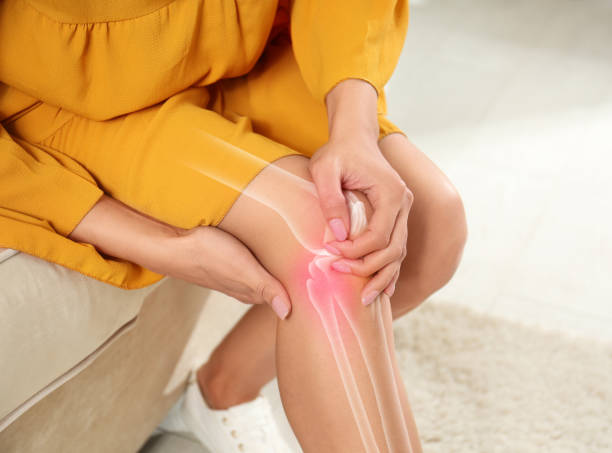
When I first heard the term PCOS, it sounded like a distant medical acronym, something I’d skim past in a health magazine. But when a close friend, Sarah, was diagnosed with Polycystic Ovary Syndrome, I saw firsthand how it disrupted her life—irregular periods, weight fluctuations, and the emotional toll of unpredictable symptoms. She felt overwhelmed, but one thing that brought her solace was yoga. Over time, her practice became a lifeline, helping her manage symptoms and regain a sense of control. Inspired by her journey, I dove into researching how yoga can support women with PCOS, and what I found was transformative. Yoga isn’t just exercise; it’s a holistic tool that can ease physical discomfort, balance hormones, and nurture mental well-being.
PCOS affects millions of women worldwide, with symptoms ranging from hormonal imbalances to fertility challenges. While medical treatments are essential, complementary practices like yoga offer a gentle, empowering way to manage symptoms. In this post, we’ll explore the best yoga poses for PCOS relief, backed by science and expert insights, woven with stories and practical advice to guide you on your wellness journey. Whether you’re new to yoga or a seasoned practitioner, these poses can help you find balance and reclaim your health.
Understanding PCOS and Yoga’s Role
Polycystic Ovary Syndrome is a hormonal disorder that affects women of reproductive age, often leading to irregular menstrual cycles, excess androgen levels, and small cysts on the ovaries. Symptoms vary widely—some women experience acne and hair growth, while others struggle with weight gain or infertility. The condition can feel like a puzzle with missing pieces, but lifestyle changes, including yoga, can help fit those pieces together.
Yoga, an ancient practice rooted in mindfulness and movement, works by reducing stress, improving circulation, and supporting hormonal balance. Stress is a major trigger for PCOS symptoms, as it elevates cortisol, which can worsen insulin resistance—a common issue in PCOS. A study published in the Journal of Alternative and Complementary Medicine found that yoga significantly reduces cortisol levels, helping to regulate the hypothalamic-pituitary-adrenal axis, a key player in hormone production. By calming the nervous system and enhancing blood flow to the pelvic region, yoga can alleviate symptoms like menstrual irregularities and pelvic pain.
But yoga’s benefits go beyond the physical. For Sarah, rolling out her mat was a daily act of self-care, a moment to reconnect with her body and quiet her mind. It wasn’t about perfecting poses but about showing up for herself. Let’s explore the poses that can offer similar relief for you.
The Best Yoga Poses for PCOS Relief
Reclining Butterfly Pose (Supta Baddha Konasana)
Imagine lying on your back, soles of your feet pressed together, knees gently falling open like butterfly wings. This is Reclining Butterfly Pose, a restorative posture that feels like a warm hug for your body. It’s a favorite for PCOS relief because it opens the hips and stimulates the pelvic organs, improving blood flow to the ovaries and uterus.
To practice, lie on a yoga mat with a bolster or folded blanket under your spine for extra support. Bring the soles of your feet together, letting your knees relax outward. Place your hands on your belly or let them rest by your sides. Breathe deeply, feeling your abdomen rise and fall. Hold for 5–10 minutes, allowing tension to melt away.
This pose is especially helpful for easing menstrual cramps and reducing stress. A 2018 study in the International Journal of Yoga showed that restorative poses like this one lower cortisol and improve insulin sensitivity, key factors in managing PCOS. For Sarah, this pose was her go-to after a long day, helping her unwind and feel grounded.
Child’s Pose (Balasana)
Child’s Pose is like curling into a safe cocoon, a moment to pause and breathe. Kneel on the mat, sit back on your heels, and fold forward, resting your forehead on the ground. Extend your arms forward or let them rest by your sides. This gentle stretch soothes the nervous system, reduces stress, and massages the abdominal organs.
For women with PCOS, Child’s Pose can help alleviate bloating and pelvic discomfort. It’s also a grounding pose, perfect for moments when anxiety creeps in. Hold for 1–3 minutes, focusing on slow, deep breaths. If your hips feel tight, place a blanket under your knees for comfort.
Experts at the Yoga Journal recommend this pose for its calming effects, which can lower androgen levels exacerbated by stress. I remember Sarah describing how Child’s Pose felt like “a reset button,” helping her release the day’s worries.
Cobra Pose (Bhujangasana)
Cobra Pose is a gentle backbend that strengthens the spine and stimulates the reproductive organs. Lie face down, place your palms under your shoulders, and lift your chest while keeping your legs extended. Keep your gaze forward to avoid straining your neck. Hold for 15–30 seconds, breathing deeply.
This pose improves circulation to the pelvic area, which can support ovarian health and regulate menstrual cycles. It also strengthens the core, helping with weight management—a common challenge in PCOS. A 2020 article in Healthline highlights Cobra Pose as a PCOS-friendly posture for its ability to balance hormones and boost energy.
If you’re new to backbends, start slowly to avoid lower back strain. Sarah found Cobra Pose energizing, often practicing it in the morning to kickstart her day with positivity.
Bridge Pose (Setu Bandhasana)
Bridge Pose is a powerful yet accessible posture that opens the chest and hips while stimulating the thyroid gland, which plays a role in metabolism and hormonal balance. Lie on your back with knees bent and feet hip-width apart. Press into your feet to lift your hips toward the ceiling, keeping your shoulders and head grounded. Hold for 30 seconds to 1 minute, then slowly lower.
This pose is excellent for improving insulin sensitivity and reducing stress, both critical for PCOS management. A study in the Journal of Clinical Endocrinology & Metabolism noted that thyroid stimulation through yoga can support metabolic health in PCOS patients. For extra comfort, place a block under your sacrum for a supported variation.
Sarah loved Bridge Pose for its uplifting effect, saying it made her feel “strong and centered.” It’s a great pose to practice in the evening to release tension and prepare for restful sleep.
Seated Forward Bend (Paschimottanasana)
Seated Forward Bend is a calming pose that stretches the lower back, hamstrings, and pelvic region. Sit with legs extended, inhale to lengthen your spine, and exhale to fold forward, reaching for your feet or shins. Keep your spine long to avoid rounding. Hold for 1–3 minutes, breathing deeply.
This pose massages the abdominal organs, improving digestion and reducing bloating, common PCOS symptoms. It also calms the mind, helping to manage emotional stress. According to Verywell Health, forward bends like this one can enhance pelvic circulation, supporting reproductive health.
If your hamstrings are tight, use a strap around your feet or bend your knees slightly. Sarah found this pose challenging at first but grew to love its meditative quality, often pairing it with soft music.
Garland Pose (Malasana)
Garland Pose, a deep squat, is a grounding posture that opens the hips and strengthens the pelvic floor. Squat with feet wider than hip-width, toes turned out, and lower your hips toward the ground. Press your elbows against your inner thighs to deepen the stretch. Hold for 30 seconds to 1 minute.
This pose stimulates the reproductive organs and improves circulation to the pelvic area, which can help regulate periods. It’s also great for building lower body strength, aiding weight management. MindBodyGreen recommends Malasana for PCOS relief due to its hormone-balancing effects.
If squatting is difficult, sit on a block or keep your heels elevated. Sarah found Malasana empowering, as it helped her feel connected to her body’s strength.
Creating a Yoga Routine for PCOS
To maximize the benefits, create a balanced yoga routine that combines these poses with mindfulness. Start with 15–20 minutes daily, gradually increasing as you feel comfortable. Begin with Child’s Pose to center yourself, flow through Cobra and Bridge for energy, then cool down with Reclining Butterfly and Seated Forward Bend. End with a few minutes of deep breathing or meditation.
Consistency is key. A 2021 study in Frontiers in Endocrinology found that regular yoga practice over 12 weeks improved hormonal profiles and quality of life in women with PCOS. Pair your practice with a nutrient-rich diet and adequate sleep for holistic relief. Apps like Down Dog offer customizable yoga flows tailored to your needs.
Listening to Your Body
Every woman’s PCOS journey is unique, so listen to your body. If a pose feels uncomfortable, modify it or skip it. Avoid intense inversions or hot yoga, as they may overstimulate the body. Consult your doctor before starting yoga, especially if you have joint issues or are pregnant.
Sarah learned this the hard way when she pushed through a vigorous class and felt exhausted. Gentle, restorative yoga became her sanctuary, teaching her to honor her limits. Your practice should feel nurturing, not punishing.
FAQ: Your Questions About Yoga and PCOS Answered
Can yoga cure PCOS?
Yoga cannot cure PCOS, as it’s a chronic condition rooted in hormonal and genetic factors. However, it can significantly manage symptoms like irregular periods, stress, and insulin resistance. Studies, such as one in the Journal of Alternative and Complementary Medicine, show that yoga reduces cortisol and improves hormonal balance, complementing medical treatments. Think of yoga as a supportive tool, not a standalone cure.
How often should I practice yoga for PCOS relief?
Aim for 15–30 minutes of yoga 4–5 times a week for noticeable benefits. Consistency matters more than duration. A 2021 study in Frontiers in Endocrinology found that 12 weeks of regular yoga improved hormonal profiles in PCOS patients. Start with short sessions and gradually increase as you build strength and comfort.
Are there poses I should avoid with PCOS?
While most gentle yoga poses are safe, avoid intense inversions like headstands or vigorous practices like hot yoga, which may overstimulate the body or increase cortisol. If you have joint pain or other health concerns, consult your doctor. Modify poses to suit your comfort level, using props like blocks or blankets.
Can yoga help with PCOS-related weight gain?
Yes, yoga can support weight management by reducing stress, improving insulin sensitivity, and boosting metabolism. Poses like Bridge and Cobra stimulate the thyroid and strengthen the core, aiding metabolic health. Pair yoga with a balanced diet and cardio for best results. Healthline notes that yoga’s stress-reducing effects can prevent cortisol-driven weight gain.
How long will it take to see results from yoga for PCOS?
Results vary, but many women notice reduced stress and improved energy within a few weeks. Hormonal changes, like regular periods, may take 8–12 weeks of consistent practice, as shown in studies like the one in Frontiers in Endocrinology. Patience is key—focus on how you feel rather than quick fixes.
Conclusion: Embracing Yoga as a Path to Wellness
PCOS can feel like an uninvited guest, disrupting your body and spirit. But through yoga, you can reclaim your power, one breath at a time. The poses we’ve explored—Reclining Butterfly, Child’s Pose, Cobra, Bridge, Seated Forward Bend, and Garland—offer a gentle yet effective way to manage symptoms, from hormonal imbalances to stress. They’re not just movements; they’re acts of self-love, invitations to listen to your body and nurture your well-being.
Sarah’s journey taught me that healing isn’t about erasing a condition but about finding harmony within it. Yoga gave her tools to navigate PCOS with grace, and it can do the same for you. Start small, perhaps with a 10-minute flow in your living room. Roll out a mat, light a candle, and breathe. Notice how your body responds, how your mind softens. Over time, these moments will weave into a tapestry of resilience and balance.
To begin, try practicing three poses daily for a week, noting how you feel. Pair your practice with mindfulness—maybe journal about your emotions or sip herbal tea afterward. Connect with a community, whether through online forums or local yoga classes, to share your journey. Resources like PCOS Awareness Association offer support and education to empower you further.
Your PCOS journey is yours alone, but you don’t have to walk it alone. Let yoga be your guide, a steady hand leading you toward wellness. What pose will you try first? Roll out your mat and find out.




